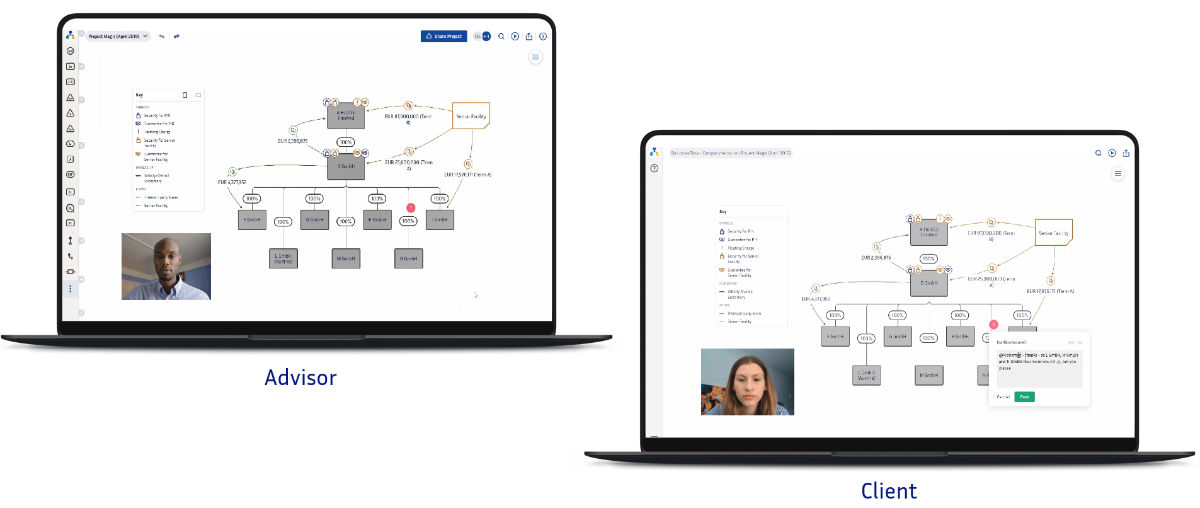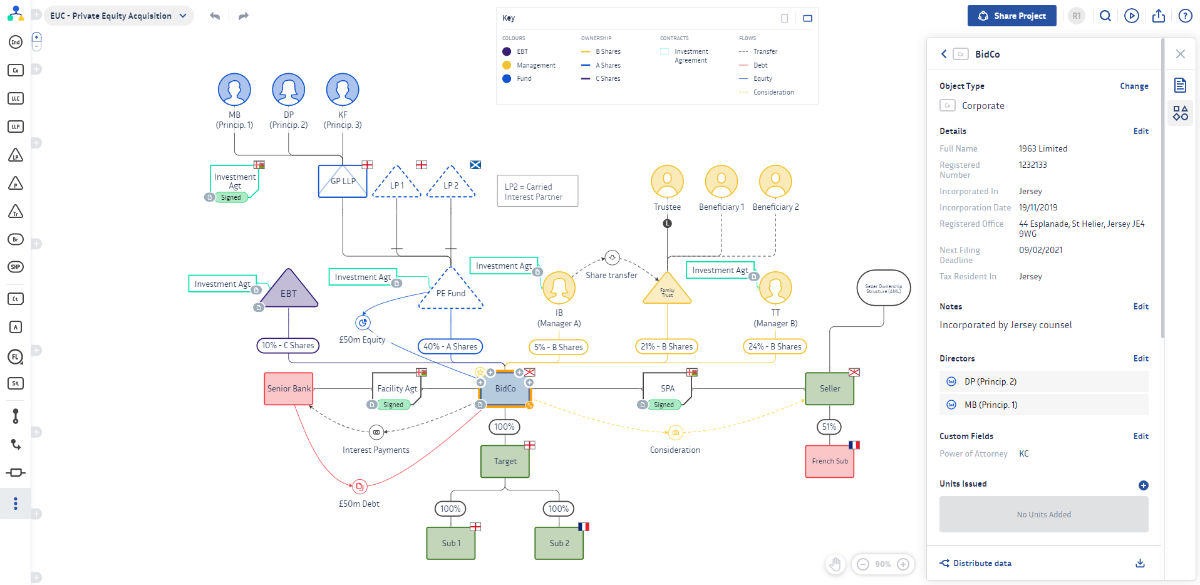
How Visualisation Tools Are Transforming the Legal Sector
Humans are hard-wired to process visuals rapidly. In fact, MIT neuroscientists have found that our brain is able to process images within timeframes as short as 13 milliseconds.1https://news.mit.edu/2014/in-the-blink-of-an-eye-0116 But as the amount of information and data we are processing grows exponentially in today’s modern world, we struggle to do so. As our attention spans reduce, visuals can help to bridge the gap between rapid communication and understanding.
When it comes to complex, traditionally text-based legal information, the need for lawyers to communicate more visually is more important than ever. More than seven in 10 lawyers across Europe and the U.S. say that both “coping with increased volume and complexity of information” and an “emphasis on improved productivity and efficiency” are top trends that can have impact to firms.2https://landing-legisway.wolterskluwer.com/2019-future-ready-lawyer-report-legal-departments?utm_source=IACCM&utm_campaign=FutureReadyLawyer&utm_medium=website This is why visualisation tools have become a key part of the technology agenda for innovative law firms, helping legal teams solve their most complex day-to-day challenges.
Making Complex Ideas Easier to Understand
While a doctor can use anatomical diagrams to make a point, or architects and engineers have computer aided design (CAD) software to represent vast amounts of information relating to a building’s structure, only recently have legal teams been adopting visualisation into their workflows to understand and explain the intricacies of their work.
Whether a corporate structure, a M&A transaction, a dispute, or the connections in a complex piece of legislation, one case or transaction may involve 40-50 individuals across multiple organisations.
By integrating innovative visualisation tools, lawyers can “visually map” concepts and structures, and benefit from:
- Simplifying highly complex issues to speed up communication and understanding;
- Getting a holistic view to improve analysis and identify potential roadblocks or areas of opportunity; and
- Ensuring that everyone has the same understanding of the most up-to-date, accurate, information
An Indian Law Firm Jerome Merchant + Partners (JMP), recently implemented StructureFlow, a visual collaboration tool. Murtaza Somjee, Partner at JMP shared, “We’ve already used the tool in a restructuring transaction, where our client was able to better understand the complex deal elements through visualisation. It has also helped us in an M&A deal where we have used it to help our client keep track of the stages of the acquisition more transparently and in real-time.”
 Connecting Visuals with Information
Connecting Visuals with Information
Interactive visual models of legal structures and transactions can set out the different elements such as interconnected companies, contractual relationships and funding arrangements.
For most law firms, relevant information is often fragmented and stored across a variety of sources and systems, and held by different parties, making it extremely hard to present a holistic view and therefore a comprehensive understanding of the project.
One of the benefits of using a tool like StructureFlow is the ability to connect underlying data to the visualisation. For example, the following is a Private Equity Acquisition project created in StructureFlow:
 Attached to the diagram is a broader and more detailed view of the legal subject matter as a whole – full details of the entities, individuals, contracts, and assets involved. Rather than a static visual, the model allows all parties – lawyers, their clients, and other stakeholders – to see the complete picture, as a “single source of truth”, all at once.
Attached to the diagram is a broader and more detailed view of the legal subject matter as a whole – full details of the entities, individuals, contracts, and assets involved. Rather than a static visual, the model allows all parties – lawyers, their clients, and other stakeholders – to see the complete picture, as a “single source of truth”, all at once.
This combination of visualisation, tied to underlying information, is what can really take legal teams to the next level as they strive to achieve clarity and understanding of complex issues.
The Employee and Client Lens
In the Tech and the Law Report by Thomson Reuters, 61 per cent of legal employees stated they consider legal innovation when evaluating their employer, and almost half (48 per cent) stated that a lack of legal innovation would prompt them to move to a new law firm or organisation.3http://images.connect.thomsonreuters.com.au/Web/TRLegalAU/%7Bf78bdc0f-fd76-4e83-be28-5ecb8852af33%7D_Thomson_Reuters_Tech_and_the_Law_2020_Report_130520.pdf
One of the underlying benefits of new visualisation technology is that junior lawyers and paralegals no longer need to spend hours excruciatingly drawing diagrams in legacy drawing tools – manually moving shapes and lines around to make a structure chart look comprehensible (and well designed). Instead, they can now turn to legal visual modelling technology which can help improve their experience at the firm.
Additionally, 68 per cent of legal professionals said that technology has helped their firms deliver better client experiences during the pandemic.4https://legaltalknetwork.com/podcasts/digital-detectives/2020/12/clios-legal-trends-report-2020-a-look-into-the-future-of-law/Therefore, it is easy to see why making collaboration tools a priority for your business can help your firm succeed.
In a global legal services industry that is only going to become ever more competitive, digital tools for visualisation can help law firms and in-house legal teams communicate complex ideas to their clients in ways that help them “stand out from the crowd”, enabling them to win more business and trust.
Endnotes
| ↑1 | https://news.mit.edu/2014/in-the-blink-of-an-eye-0116 |
|---|---|
| ↑2 | https://landing-legisway.wolterskluwer.com/2019-future-ready-lawyer-report-legal-departments?utm_source=IACCM&utm_campaign=FutureReadyLawyer&utm_medium=website |
| ↑3 | http://images.connect.thomsonreuters.com.au/Web/TRLegalAU/%7Bf78bdc0f-fd76-4e83-be28-5ecb8852af33%7D_Thomson_Reuters_Tech_and_the_Law_2020_Report_130520.pdf |
| ↑4 | https://legaltalknetwork.com/podcasts/digital-detectives/2020/12/clios-legal-trends-report-2020-a-look-into-the-future-of-law/ |






